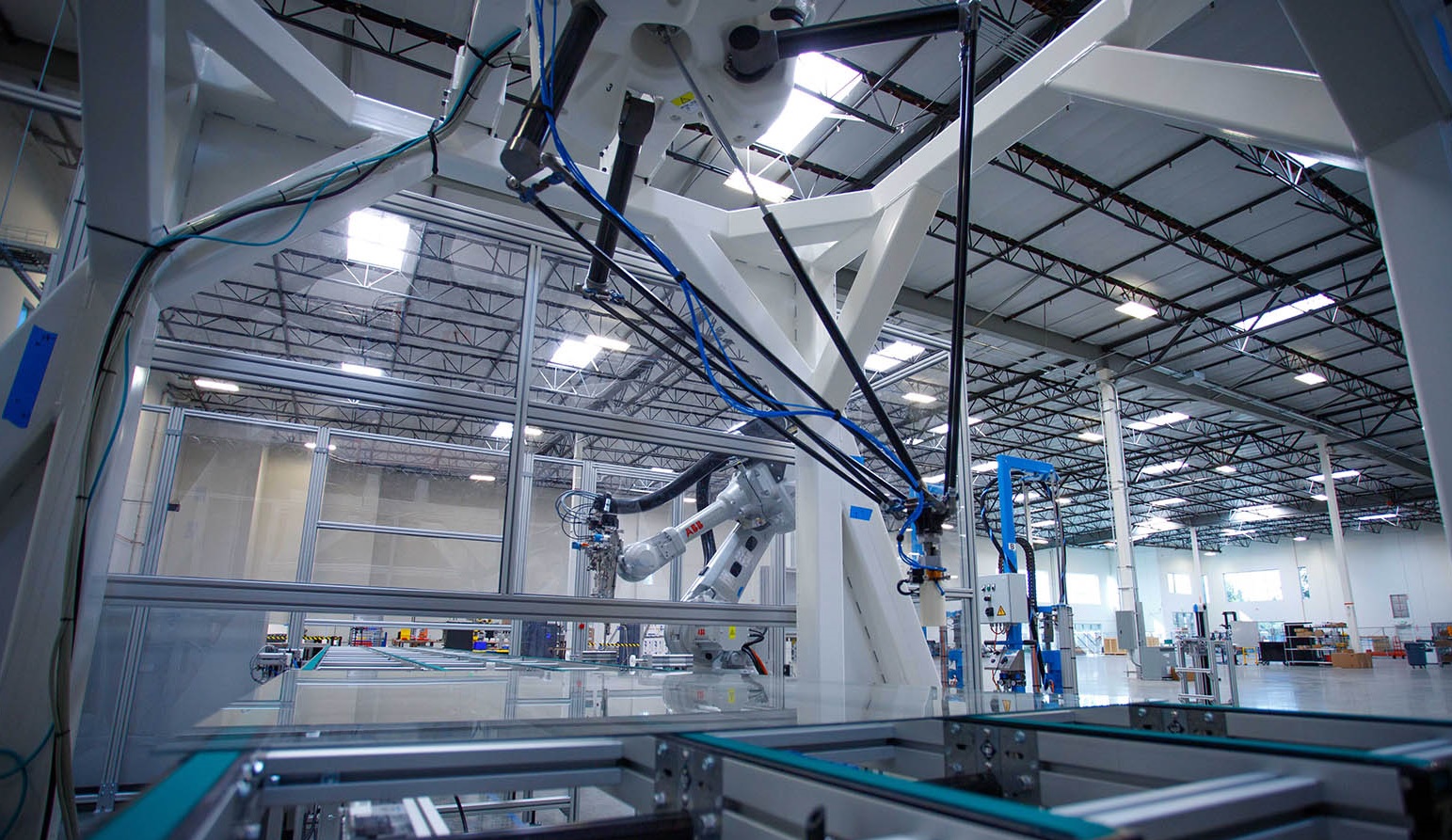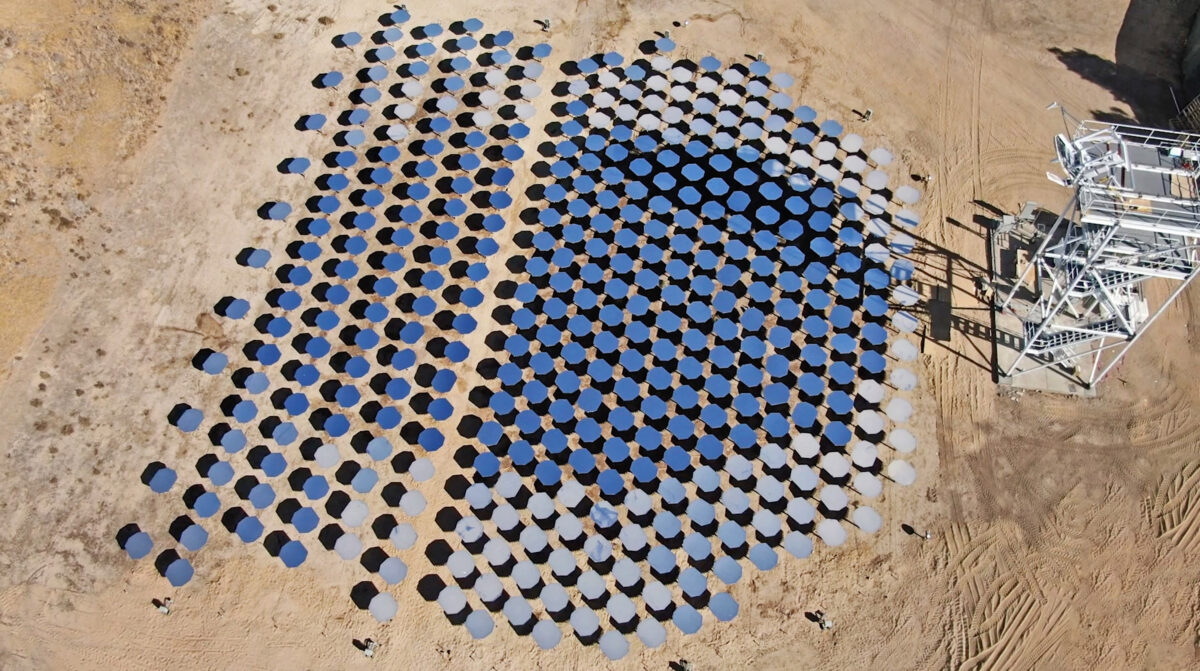Heliogen, Inc., a specialist in AI-enabled concentrated solar power (CSP) technology, completed two product development milestones related to its Capella Project. The milestones include the deployment of the first commercial-scale centrifugal particle receiver for on-sun testing and the completion of the design verification of the prototype particle receiver for Capella. The next step is for the particle receiver to be deployed in the project.
The Capella Project is a 5 MW commercial concentrating solar power plant to be built by Heliogen in Kern County, Calif. It will be constructed on a 117-acre field of computer-controlled heliostat mirrors focusing solar energy on receiver apertures on top of an approximate 330-foot-tall, centralized power tower. It includes an ancillary half-acre solar array. Heliogen reports that Capella will be the world’s first fully integrated Generation 3 CSP plant that achieves unprecedented efficiencies by combining solid-particle thermal energy storage and supercritical CO2 power .
A collaboration with Woodside Energy, an Australian energy company, the Capella Project received a funding award from the U.S. Department of Energy. Upon completion, the project will add to Heliogen’s portfolio of commercially ready technologies and will broaden the space of potential applications to include variably sized power projects and improve economics for many customers.
“By using Heliogen’s next-generation solar energy technology, industrial energy users will be able to improve their bottom line while doing their part to mitigate climate change,” said Christie Obiaya, chief executive officer of Heliogen. “Completing these two Capella milestones brings us one step closer to helping industries move into high-value, solar-powered processes and reduce dependence on volatile fossil fuels.”
The completed project milestones move the project closer to harnessing heat from the sun to produce electrical power.
Heliogen’s particle receiver works is by particles directly absorbing solar radiation and achieving rapid heat transfer and high receiver efficiency. The solid particles, such as sintered bauxite, are routed into a centrifugal receiver. As the receiver turns, the particles absorb concentrated sunlight and heats to temperatures of up to 750 C (1382 F). That heat is then transferred to an insulated silo for industrial use and energy storage.
“These milestones represent exciting progress in our collaboration to demonstrate the potential of Heliogen’s innovative, concentrated solar energy technology,” said Jason Crusan, vice president, New Energy Growth and Solutions at Woodside. “They also advance the development of a technology solution that supports our commitment to building a low-cost, lower-carbon, profitable, resilient and diversified portfolio.”

Last year Heliogen announced the opening of its first full-scale manufacturing facility, located in Long Beach, California, within close proximity to the Capella Project site. The facility houses assembly lines, a test facility, and rapid development center for the production of heliostats and other components in the company’s concentrated solar energy system. Heliogen said the manufacturing facility will bring 250 full-time jobs to the region by 2025.
The Capella Project remains on track with its previously disclosed development schedule, with front-end engineering design expected to be complete in late 2023 and groundbreaking planned for 2024.
This content is protected by copyright and may not be reused. If you want to cooperate with us and would like to reuse some of our content, please contact: editors@pv-magazine.com.









By submitting this form you agree to pv magazine using your data for the purposes of publishing your comment.
Your personal data will only be disclosed or otherwise transmitted to third parties for the purposes of spam filtering or if this is necessary for technical maintenance of the website. Any other transfer to third parties will not take place unless this is justified on the basis of applicable data protection regulations or if pv magazine is legally obliged to do so.
You may revoke this consent at any time with effect for the future, in which case your personal data will be deleted immediately. Otherwise, your data will be deleted if pv magazine has processed your request or the purpose of data storage is fulfilled.
Further information on data privacy can be found in our Data Protection Policy.